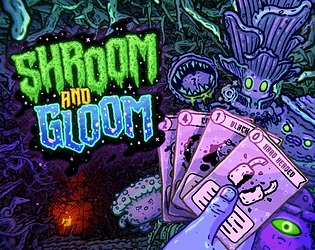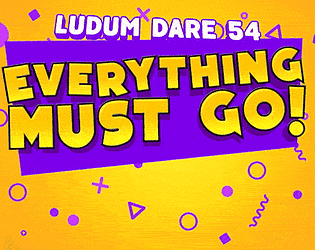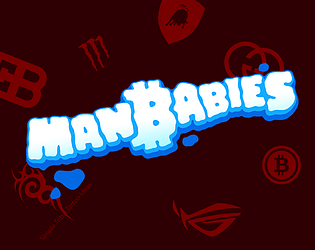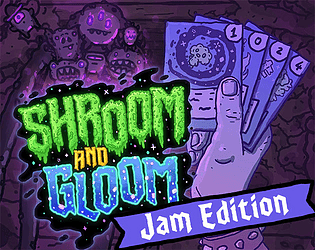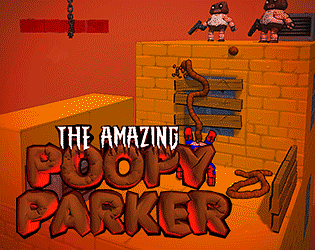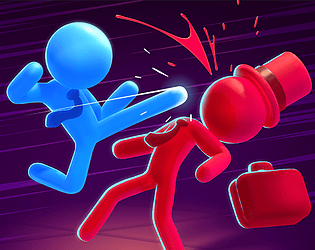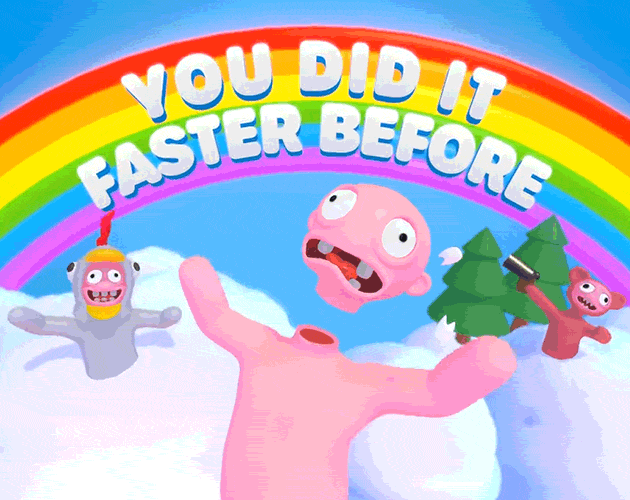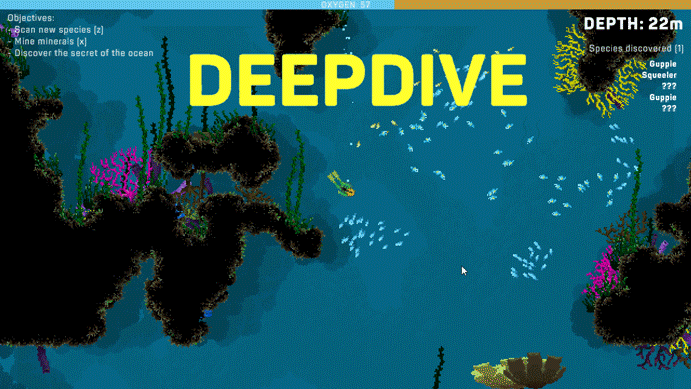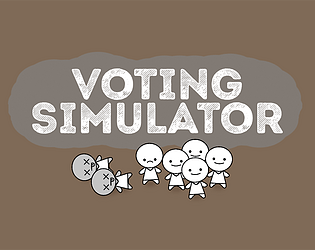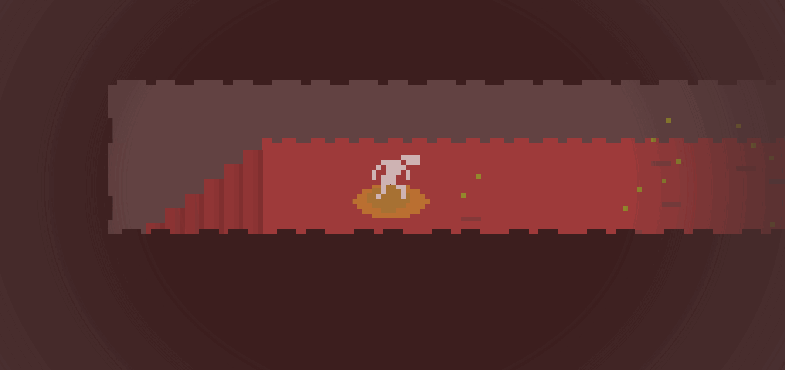Sorry... we're still working on it... but the demo has an update
Call Of The Void
Creator of
Recent community posts
This is a very cool puzzle design.
I think a thing that might improve the game is displaying which power lines are charged (and in which direction)... Currently, in order to figure out the direction of a circuit the player has to trace forwards from the last switch, and it isn't always super clear how the power lines are connected (there are some obfuscated T-Junctions in places that I'm still not sure how the connection worked, but I beat it via trial and error).
It's a solid challenge though, it gets complicated pretty quickly. It's a pretty excellent puzzle game to have made within the few days of the game jam!
Love the concept and the vibe! Super cool Americana feeling.
I struggled a bit with the rules. Once I missed a single checkpoint I was sort of stuck racing without progressing at all. So then I started driving really slowly to help keep between the checkpoints. The risk of missing a checkpoint, given the wide turning circle, was too great.
The check points also don't follow the road, which means I had no idea where the next checkpoint will be, so I couldn't go fast because the checkpoint might require me to take a corner sharply.
I think I could really love this game if the level design helped me feel like a badass. It's such a cool theme for a racing game!
Thanks!
I'm not 100% certain about the "Amen" part... the concept was a little bit like "Assemble your troops and then pray"... a bit like in Balatro where you just hope your number is high enough.
I'm sure glad you could figure it out! (Given that it is pretty untested and clearly a bit confusing!)
I think 68,000 is higher than I've ever gotten!
Neat idea! It was fun, though the feedback on what was causing me not to be able to braai felt missing. There was no feedback on which item was causing the braai to fail. (I did read the instructions, but I wasn't certain what constituted the middle of the braai...)
Full disclosure, I'm not very good at braaing in real life.
This is a very compelling game until the content ran out. It took me a minute to figure out what caused death, and like others have said, more enemy variety would be the next thing to work on (and Shogun Showdown has lots of ideas for this).
But I really enjoyed it! I played to the end. The strategy involved in making blocks land in the best possible placement is interesting! (I would have loved some push back and swap positions attacks to play with)
The first two levels were good... the puzzles worked well and introduced the mechanics... the visuals were clear and easy to parse...
But the third level (the platforming one) was kind of a pain. Pushing blocks with your face is kind of a pain, and first-person platforming is kind of a pain (if there aren't parkour mechanics). I'm surprised my solution of pushing the two blocks on top of each other worked, it felt like if anything went wrong I'd have to restart the level again. Is that level necessary?
I'm curious about where the final level is heading, with the enemies who target you. I'd like to see it all come together. I'd like to use an enemy corpse to activate a button... but then... I suspect the gun isn't ever going to work.
Haha! There's so much potential here. I wanted the boulders to be better at killing the gummies, I guess setup so that they roll towards the gummies rather than across their path. The level being a bit tighter might have allowed for this.
I'd also like a bit more hit-stun on the gummies. It felt like they could jiggle more in reaction to being shot (though the fact that they did jiggle was pretty satisfying)
This feels like a really solid concept! Splatoon meets Need For Speed.
It's already been said, but a smaller map would probably make it better. In a multiplayer game you don't want players going off and doing their thing alone. Multiplayer is best when interacting with other players. And in a smaller map the players will naturally spend more time bumping into each other and going over each others' tracks. The size of the current map feels like you could each have your own single player adventure separately (which isn't great).
I haven't played it properly in 2 player yet. But I feel like there's an obvious mechanic when it comes to bumping cars:
The opponent's car should not explode, instead it should spin away, out of control, leaving behind a trail in your color.
Another thing, that has been mentioned. There should be a way to get nitro back... perhaps skidding slowly replenishes nitro? (I guess it's that, or over-time, or pickups). Hmmm... Are those blue capsulte pickups?
I don't play many driving games, but I enjoyed the extra-arcady feel while I had Nitro. Felt like I had more control than in a normal driving game (and the Nitro made it much easier to keep a skid going, which felt fun).
Getting stuck upside down after ramping was less fun :P
Super glad that you're not demoralized. Your game is still technically very impressive, and maybe could have been great if you had had three weeks on it, but it's clear (like you say) that you didn't get time to do anything else other than "get everything in".
I don't think adding a third person to the team will help.
Expanding the team means more communication, more time spent getting everyone onto the same page and excited. The team will grow by 50% but the work you'll be able to do might increase by 25%... and you'll probably try be even more ambitious now that you have a third teammate (assuming nothing else changes).
I feel pretty confident it will play out that way, that you'll just be more ambitious with three people, because Twin Hydra seem to have a little bit of time blindness, and a lot of enthusiasm for new features.
I too have a lot of enthusiasm for adding more things into a game. At Free Lives I'm probably the person who is most inclined to over scope and just keep adding more. I don't think it's a harmful impulse when harnessed for good, but it can lead to disappointment and sorrow when used for evil (in my experience).
Maybe if you split up, each working on their own game, you'd find you are both less ambitious and so work more within your means, and maybe you'll have better outcomes...
But that seems sort of sad. And honestly I think you're just going to run into this problem at a later stage anyway.
Here's my advice... get your salt pinching fingers ready... I do a couple things these days that help me avoid overscoping:
A) I attach times to tasks. If the task says "implement a new major mechanic", for example movement, it's a day of work in a jam. This includes testing and iteration of course. If the thing needs to interact and actually feel good - it takes a day, if it can be janky then if can be a bit quicker.
Critically: the time a task takes isn't the raw implementation time, the time a single task takes includes all the iterations and time spent talking about how to fix it or improve it. Don't even try predict it, just mark it down as a day.
This means I can do two or maybe three mechanics in a jam, and I have to make the game enjoyable with just those. And I'm pretty damn fast at jamming.
For instance the robot movement is a day, the camera system is a day, puzzles in the robot space is a day, the moving from in world to computer screen is maybe half a day, the Clippy system is half a day, the carrying around a robot in FPS view is a day. The megazord fusion is a day. Some sort of doomsday ending is a day.
i.e. I know before I've started that I couldn't have made the game you were trying to make in a jam. So, hopefully, I wouldn't have tried.
B) I don't move on from a task until it is tested and it is good (and it is tested again).
If moving a robot around is bad or untested, I won't start with movement/camera puzzles, if the puzzles at the robot level are bad or untested, I won't build the FPS part where you drop the robot in the hole, if the FPS part is bad or untested I won't build the fake Windows interface... and so on.
Generally in a jam I'm then designing games that have multiple exit points. Like if I'm running out of time it will still be good if it is just X, but if things go well we can do X and Y.
i.e. My plan is always start small and expand in layers like an onion.
This obviously has some drawbacks... mostly that it makes it hard to write a narrative, literally not knowing what the game will do at the end of the jam, so I will start off with a vague idea of stories the game could tell are, and only fill in those details when the game has the elements to tell those stories. It's a compromise of course, but I think it's generally better than trying to tell the whole story despite the game not supporting that story.
Beyond narrative difficulties, in general this iterative approach means you cannot plan the entire game at the start. At best you can have a theory of what the game could be, but there will be a ton of "if this is fun" or "if we implement this really well". I'll have a plan B in case the ambitious elements need to be cut, and most often I am forced to fall back to a plan B, or plan C or D... but that's generally because plan A couldn't have been implemented well in the time.
The HUGE upside about working iteratively instead of sticking to a plan is that making games just isn't predictable. Sometimes one seemingly small feature turns out to be a massive challenge requiring a lot of iteration, sometimes the feature turns out to straight-up suck, and then the shape of the whole game needs to change because you actually only have half the time you'd expected to do the rest. Since this ALWAYS happens, in my mind it's better not to plan in detail in the first place because it makes it emotionally more challenging to pivot later.
Those are my thoughts.
A) Allocate realistic time for tasks when you are planning.
B) Don't plan, work incrementally and iteratively.
This is really impressive technically. And I can see the shape of the puzzle, though I gave up at the yellow truck.
If I can be honest, I feel like this is a pattern with Twin Hydra game jam games. Twin Hydra games have a lot of content in them, but the content is frustrating to wade through.
I'd love to see Twin Hydra do a small game well instead of a big game badly. My concern is that the skills needed to make an experience enjoyable aren't been practiced in these games... each game has a different janky movement scheme... lots of unique but once off simple puzzles that players briefly encounter with no room for mastering. In layman's terms: "This isn't fun."
I applaud the innovation and the creativity and the technical competence... but I worry about this pattern I'm seeing. I only worry about it because it seems to me Twin Hydra are incredibly talented, but are going about development ass-backwards. Nothing feels iterated or playtested, it all just feels ticked-off.
I'd be happy to explain further. I'm not sure if I'm being clear here. My critique isn't aimed at the game itself, but rather what I perceive/expect to be the process behind the game, and other recent Twin Hydra games.




